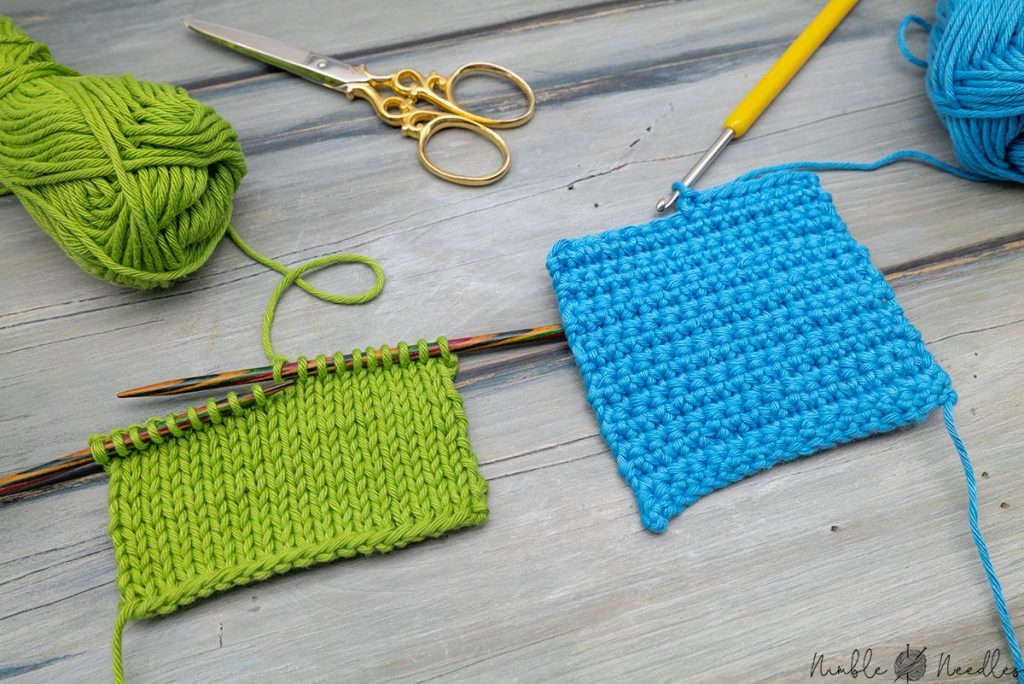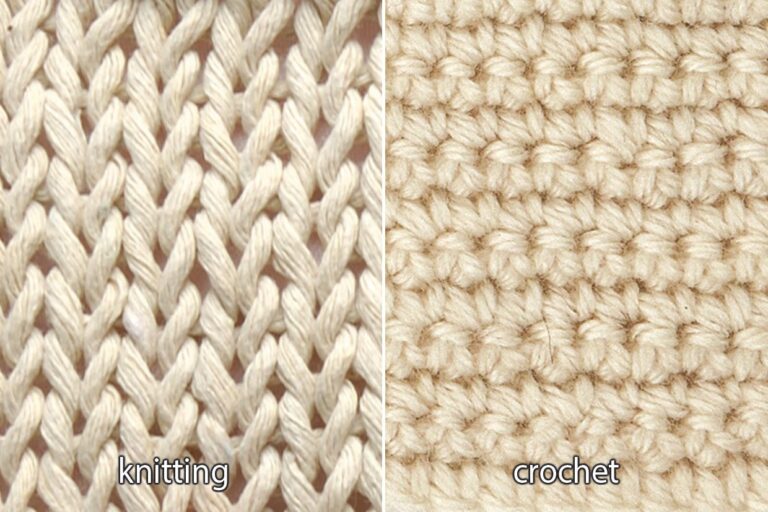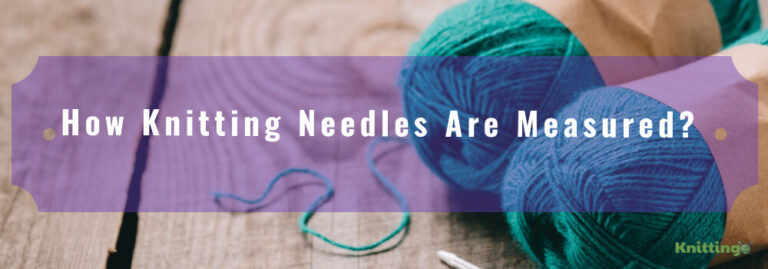Many people find that crocheting is easier to learn initially because it involves fewer stitches and techniques than knitting. On the other hand, some people find knitting easier to control and more relaxing once they get the hang of it.
Overview Of Knitting And Crocheting
Knitting and crocheting are two popular forms of needlework that involve creating fabric from yarn or thread. Both crafts have a long history and are enjoyed by people all over the world.
Knitting involves using two or more needles to loop yarn together to create a fabric. The most basic stitch in knitting is called the knit stitch, but there are many other stitches and techniques that can be used to create different patterns and textures. Knitting is often used to create warm, cozy items like sweaters, hats, and blankets.
Crocheting, on the other hand, involves using a single crochet hook to create fabric by looping yarn. The most basic stitch in crochet is the single crochet stitch, but like knitting, there are many other stitches and techniques that can be used to create a variety of patterns and textures. Crochet is often used to create items like hats, scarves, and amigurumi (crocheted stuffed animals).
Differences between Knitting and Crocheting
| Knitting | Crocheting |
| Uses two or more needles to create fabric | Uses a single crochet hook to create fabric |
| Loops are held on the needle(s) until they are worked into the next row | Loops are worked one at a time, and the hook is inserted and pulled through each loop |
| Typically creates a denser, smoother fabric with less stretch | Typically creates a more flexible, textured fabric with more stretch |
| Often uses finer yarns and produces a thinner fabric | Often uses thicker yarns and produces a thicker fabric |
| Stitches are held on the needle(s) and can easily be undone if a mistake is made | Stitches are worked one at a time, and it can be more difficult to undo a mistake |
| Can be slower to work up, especially with more complex stitch patterns | Can be faster to work up, especially with simpler stitch patterns |
| Many different stitch patterns and techniques can be used to create a variety of textures and designs | Many different stitch patterns and techniques can be used to create a variety of textures and designs |
| Often used to create items like sweaters, scarves, and blankets | Often used to create items like hats, amigurumi, and blankets |
Learning Knitting
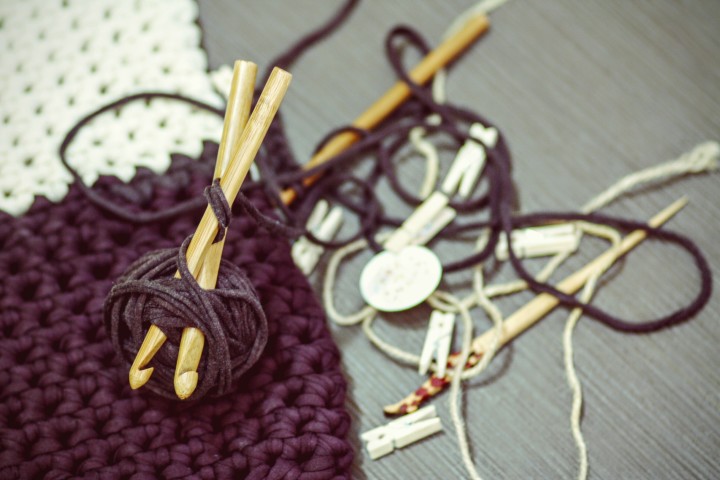
Learning to knit can be a fun and rewarding experience. Here are some steps to get started:
- Gather your supplies: You’ll need a pair of knitting needles and some yarn to get started. It’s best to choose a yarn that is smooth and easy to work with, like medium-weight wool or acrylic.
- Learn the basic knit stitch: The knit stitch is the foundation of knitting, and it’s important to master it before moving on to more complex techniques. There are many resources available for learning how to knit, including books, online tutorials, and in-person classes. Choose the method that works best for you and practice until you feel comfortable with the stitch.
- Practice, practice, practice: Knitting requires patience and persistence, so don’t get discouraged if it takes some time to get the hang of it. Start with simple projects, like scarves or dishcloths, and work your way up to more complex items as you gain confidence.
- Join a knitting group: Knitting can be a social activity, and joining a group can be a great way to meet other knitters, learn new techniques, and get feedback on your projects. Look for local groups in your area, or join an online knitting community.
- Experiment with different yarns and stitches: Knitting offers endless possibilities for creativity, so don’t be afraid to try new things. Experiment with different types of yarns and colors, and try out different stitch patterns to create unique textures and designs.
Learning Crocheting
Learning to crochet is a fun and creative activity that can be enjoyed by people of all ages. Here are some steps to get started:
- Gather your supplies: You’ll need a crochet hook and some yarn to get started. It’s best to choose a yarn that is smooth and easy to work with, like a medium-weight acrylic or cotton.
- Learn the basic stitches: The single crochet stitch is the foundation of crochet, and it’s important to master it before moving on to more complex techniques. There are many resources available for learning how to crochet, including books, online tutorials, and in-person classes. Choose the method that works best for you and practice until you feel comfortable with the stitch.
- Practice, practice, practice: Crocheting requires patience and persistence, so don’t get discouraged if it takes some time to get the hang of it. Start with simple projects, like scarves or washcloths, and work your way up to more complex items as you gain confidence.
- Join a crocheting group: Crocheting can also be a social activity, and joining a group can be a great way to meet other crocheters, learn new techniques, and get feedback on your projects. Look for local groups in your area, or join an online crocheting community.
- Experiment with different yarns and stitches: Crocheting offers endless possibilities for creativity, so don’t be afraid to try new things. Experiment with different types of yarns and colors, and try out different stitch patterns to create unique textures and designs.
Comparing the Learning Curves of Knitting and Crocheting
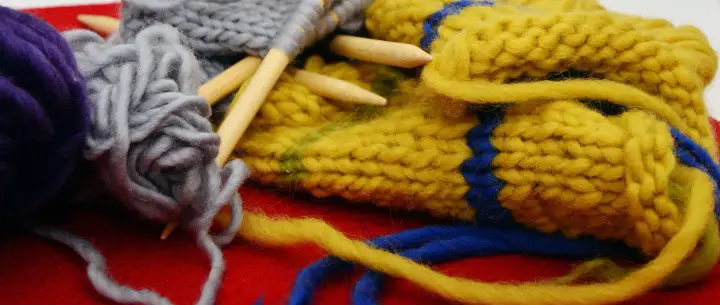
Here are some points comparing the learning curves of knitting and crocheting:
Learning Curve for Knitting:
- Knitting involves using two needles to create fabric, which can be challenging for beginners to hold and manipulate at first.
- Knitting requires more precise tension control, and mistakes can be more difficult to correct.
- Knitting often has a steeper learning curve compared to crocheting.
Learning Curve for Crocheting:
- Crocheting involves using a single hook, which can be easier to hold and maneuver.
- Each stitch in crocheting is worked individually, making mistakes easier to fix.
- Crocheting often has a more gradual learning curve compared to knitting.
It’s important to remember that these points are generalizations and individual experiences may vary. The learning curve for both crafts can also depend on factors such as prior experience with crafts and individual learning style. Ultimately, the best way to determine which craft has a more manageable learning curve for you is to try both and see which one feels more comfortable and enjoyable.
Conclusion
In conclusion, knitting and crocheting are both enjoyable crafts that offer endless possibilities for creativity and self-expression. While there are differences in the techniques and learning curves of each craft, both can be learned with practice and persistence. Whether you choose to knit or crochet, the key is to have fun and enjoy the process of creating something unique and beautiful. With time and experience, you can master these skills and create handmade items that are both functional and beautiful.
References:
https://knittingknowledge.com/knitting-guides/knitting-vs-crocheting/
https://www.marthastewart.com/2139011/knitting-and-crocheting-differences

